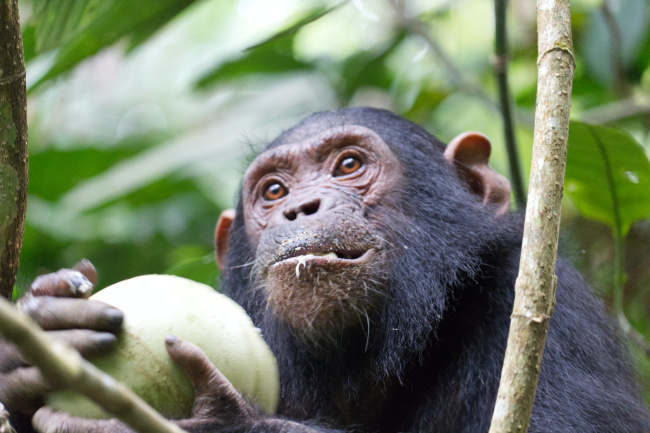
Mahale Mountains National Park
Mahale Mountains National Park covers 617 square miles (1,600 square km) of dense mountainous rainforest soaring up from the white sand beaches of Lake Tanganyika. It is one of the least visited parks in Africa due to its remoteness. The park is reached by a four- to five-hour flight and a 90-minute boat transfer, making it one of the more expensive parks to reach, but it also offers the wildlife experience of a lifetime.
More about Mahale Mountains National Park
The Mahale Mountains are home to our closest kin, the chimpanzees, and an estimated 700 – 1,000 individuals inhabit the park. Mahale offers the best chimpanzee interaction in all of Africa. One group has been studied and habituated to humans since 1965, and visitors to Mahale will have a chance to track and observe wild chimpanzees up close in their natural habitat.
A safari experience at Mahale is mainly focused on chimp trekking on foot with the possibility of seeing antelope species, smaller primate species, and a wide variety of birds. Generally, chimp trekking involves hiking with a guide through forested slopes in search of the habituated chimpanzee. You might see them right away, or you might need to hike three or four through strenuous terrain depending on the whereabouts of the group. Once the chimpanzees are located, visitors are allowed one hour to observe the group in close proximity. The remainder of the day is spent relaxing at camp, sunbathing on the beach. and enjoying water activities in Lake Tanganyika.
Lake Tanganyika is the second-largest freshwater lake in the world by volume, and is also one of the oldest lakes in the world. With a depth of 4,920 feet (1,500 m), it is also the second-deepest lake in the world. The lake is part of the East African Rift Valley fault system, and mountains rise on either side. Due to the prolonged isolation, an incredible 600 species of fish are thought to be endemic to Lake Tanganyika. The lake water is crystal clear and supposedly free of bilharzia. The activities offered at the lake include swimming, snorkeling, sailing, fishing, and kayaking. Please check with the camp about hippos and crocodiles as they are known to be present in the lake.
The most cost effective packages to Mahale depart from Arusha and are either three nights, arriving on Mondays and departing on Thursdays, or four nights arriving on Thursdays and departing on Mondays, and are often paired up with three or four nights at Katavi National Park.
A few caveats on chimp trekking:
There is a minimum age limit of 12 years for safety reasons. Chimpanzees have been known to be aggressive towards young children. There is a 60-minute limit to spend with the chimps per day. Visitors will be required to wear a face-mask while viewing the chimps. Any visitors showing symptoms of contagious disease, ie. cold, flu, will not be permitted to view the chimps and no refunds provided on the chimp permits. There is a small chance that visitors may not see the chimps during their stay. Typically, during a 3 or 4 night visit, the chance of seeing the chimps on at least one of the days is about 90 percent. Visitors should be reasonably fit and able to hike on steep and potentially slippery terrain.
The best time of year to visit Mahale is during the dry season from June to October. During this period, the chimpanzees are likely to be seen in larger groups and feeding on fruits on the lower slopes of the mountain making them easier to spot. The mountain trails are also drier and easier to access. The green season from November to March is also beautiful at Mahale, and the vegetation is lush, with abundant birds and butterflies making it a photographer’s paradise. The chimpanzees are generally more dispersed and found higher up on the slopes at this time of year. You cannot visit Mahale in April and May as the camps are closed and there are no flights.
We believe travel is more than ticking destinations off a list – it’s about discovering new places deeply, feeling connected wherever you go, and knowing you have a trusted team behind you every step of the way.



